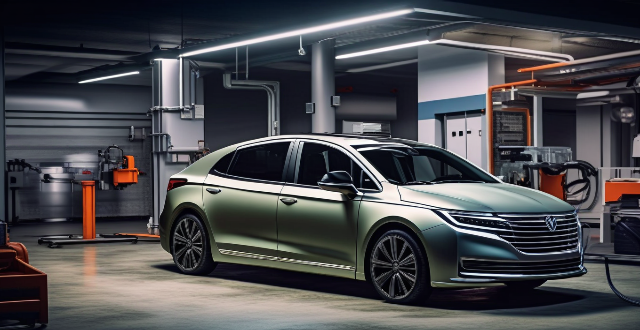
Are diesel hybrid cars more fuel-efficient than regular diesel cars ?
Diesel hybrid cars are more fuel-efficient than regular diesel cars due to the combination of a diesel engine and an electric motor, which optimizes fuel consumption and reduces emissions. They offer improved fuel efficiency, lower emissions, and better performance compared to traditional diesel vehicles.
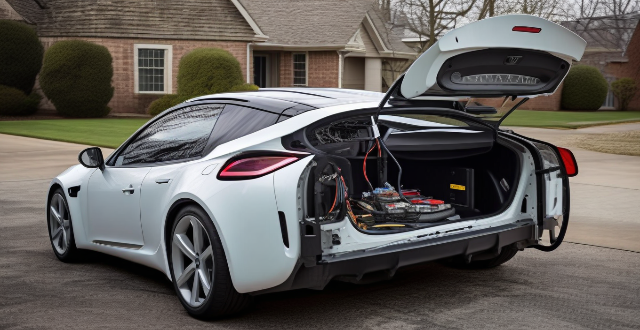
Can you convert a regular diesel car into a diesel hybrid car ?
Converting a regular diesel car into a diesel hybrid is possible but involves technical challenges, high costs, and potential legal and warranty issues. It requires installing a battery pack, integrating electric motors, and modifying the drivetrain and control systems. Professional assistance is recommended due to the complexity of the project. The financial investment may not be justified compared to buying a new hybrid vehicle. Legally, modifications could void the warranty and affect insurance coverage, and compliance with emissions and safety standards must be ensured.
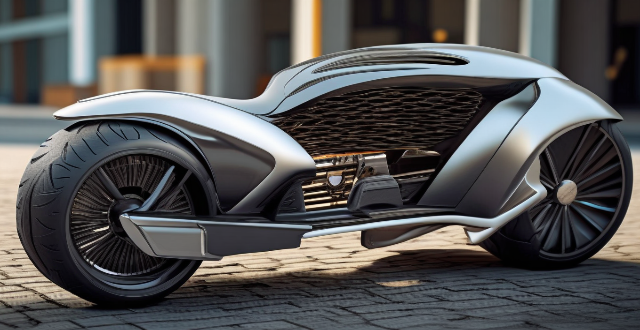
Are diesel hybrid vehicles better for the environment than regular diesel vehicles ?
Diesel hybrid vehicles, which combine a diesel engine with an electric motor, have the potential to be more environmentally friendly than regular diesel vehicles. They can offer improved fuel economy and reduced emissions of CO2 and particulate matter. However, the production of batteries for hybrid vehicles can result in higher upstream CO2 emissions, and advanced emission control systems are needed to significantly reduce NOx emissions. A comprehensive lifecycle analysis that takes into account all factors would provide a clearer picture of the environmental benefits of diesel hybrid vehicles compared to regular diesel vehicles.
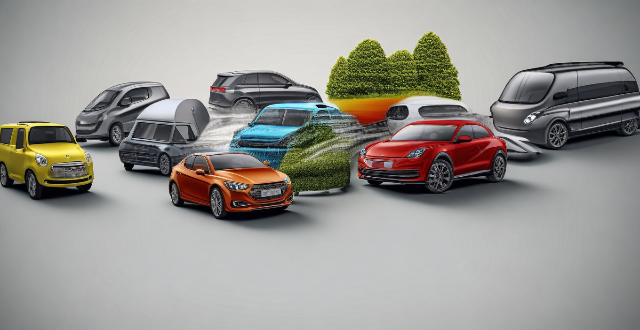
How much does a diesel hybrid car cost compared to a regular diesel car ?
The article compares the costs of diesel hybrid cars and regular diesel cars, considering factors such as initial purchase price, fuel efficiency, and long-term savings. Diesel hybrid cars are more expensive initially due to their advanced technology but offer improved fuel efficiency and reduced emissions, leading to potential long-term savings and environmental benefits. Regular diesel cars are less expensive upfront but are generally less fuel-efficient and produce more emissions. The choice between the two depends on individual priorities and budget.

What are some popular diesel hybrid car models ?
Diesel hybrid cars are becoming increasingly popular due to their fuel efficiency and lower emissions. Here are some of the most popular diesel hybrid car models: The Audi A3 TDI e-tron is a compact luxury car that combines a 2.0-liter TDI diesel engine with an electric motor. It offers up to 150 horsepower and can travel up to 31 miles on electric power alone. The Volkswagen Jetta TDI Hybrid is a midsize sedan that features a 1.6-liter TDI diesel engine paired with an electric motor. It provides excellent fuel economy and low emissions, making it an ideal choice for environmentally conscious drivers. The Peugeot 308 HDi Hybrid is a compact hatchback that combines a 1.6-liter HDi diesel engine with an electric motor. It offers impressive fuel economy and reduced CO2 emissions, while still providing plenty of power and performance. The Skoda Octavia iV is a spacious family car that features a 2.0-liter TDI diesel engine combined with an electric motor. It offers up to 240 horsepower and can travel up to 37 miles on electric power alone, making it a great option for long trips. The Volkswagen Passat TDI Hybrid is a midsize sedan that combines a 2.0-liter TDI diesel engine with an electric motor. It provides excellent fuel economy and low emissions, while also offering plenty of space and comfort for passengers.

How long do diesel hybrid engines last ?
This article discusses the factors that affect the lifespan of diesel hybrid engines and provides an estimate of their expected lifespan. It also offers tips for maximizing the lifespan of these engines through proper maintenance, responsible driving habits, high-quality fuel, and protection against extreme temperatures.
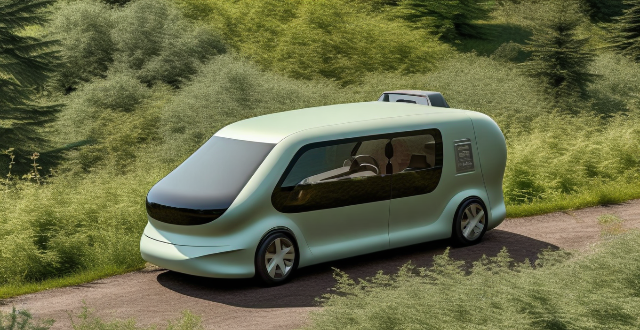
What are the pros and cons of owning a diesel hybrid vehicle ?
Diesel hybrid vehicles offer several advantages, including improved fuel economy and lower emissions. They also provide better performance and a quieter ride. However, they come with higher costs and complex technology that may require specialized maintenance. Additionally, limited charging infrastructure and potential weight issues can affect their efficiency and handling. The resale value of diesel hybrids might not be as high due to the specialized nature of the technology. Despite these drawbacks, diesel hybrids offer a reduced dependence on fossil fuels and can be a more environmentally friendly option for transportation.

Is it worth investing in a diesel hybrid vehicle for long-distance travel ?
Diesel hybrid vehicles offer high fuel efficiency and performance, making them suitable for long-distance travel. However, they come with higher costs and potential emission concerns. Alternatives like gasoline hybrids and electric vehicles might be worth considering depending on individual needs and circumstances.
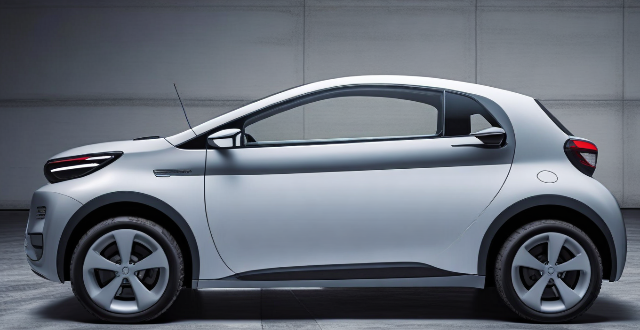
How has the design of fuel vehicles evolved over the years ?
The evolution of fuel vehicle design has been marked by significant changes and innovations over the years. From horse-drawn carriages to modern electric cars, each new development has brought its own set of benefits and challenges. Key milestones in this evolution include the introduction of steam-powered vehicles during the Industrial Revolution, the invention of gasoline-powered vehicles in 1885, the rise of diesel engines in the early 20th century, and the recent resurgence of electric cars. Looking ahead, we can expect further advancements in autonomous driving technology, hydrogen fuel cells, and biofuels made from renewable sources.

How does the cost of installing and using electric vehicle charging stations compare to traditional fueling stations ?
The transition from traditional combustion engines to electric vehicles significantly impacts fueling infrastructure, with costs associated with installing and using electric vehicle charging stations differing from those of traditional fueling stations. Initial installation for EV charging might be higher due to electrical upgrades required, but operational costs are generally lower than for traditional fueling stations. User costs for EV charging can also be more predictable and potentially lower when taking advantage of off-peak electricity rates.

How do fuel vehicles affect the economy, particularly in terms of employment in the oil industry ?
The text discusses the impact of fuel vehicles on employment in the oil industry. It highlights that the industry offers a range of jobs from exploration and extraction to refining, distribution, and sales. However, it also notes challenges such as market volatility, environmental concerns, and technological advances that could affect job stability in the sector. The text concludes by emphasizing the need for strategies that promote economic stability while encouraging sustainable practices and innovation.
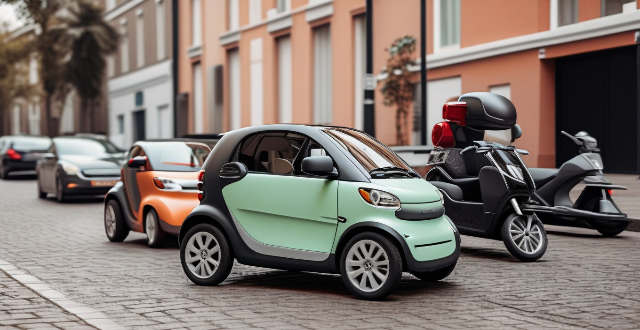
How does the performance of fuel vehicles differ from that of electric cars ?
The performance differences between fuel vehicles and electric cars are significant in terms of acceleration, refueling/charging, emissions, maintenance, and noise/vibration. Electric cars offer faster acceleration, lower maintenance needs, and cleaner operation but may require longer charging times and have limited charging infrastructure compared to the widespread availability of gas stations for fuel vehicles. The choice between the two often depends on personal preferences, lifestyle needs, and environmental considerations.
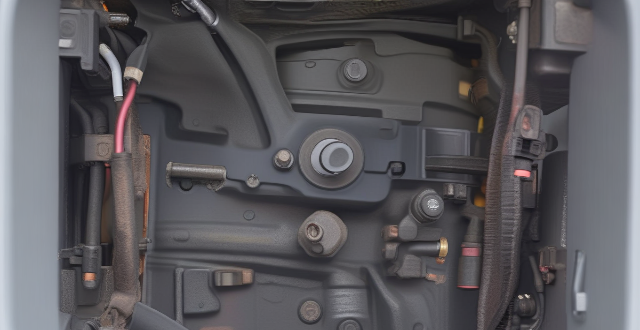
Can an electronic speed controller be used in a car engine ?
The question of whether an electronic speed controller (ESC) can be used in a car engine depends on the type of engine. In traditional internal combustion engines (ICE), which use gasoline or diesel as fuel, an ESC cannot be used because these engines rely on mechanical systems for speed control. However, in electric cars, which use electric motors as their primary source of propulsion, an ESC is essential for controlling the speed of the motor and protecting it from damage. Therefore, while an ESC cannot be used in ICE vehicles, it plays a crucial role in electric vehicles.

How has the pandemic impacted the energy market ?
The COVID-19 pandemic has significantly impacted the energy market by decreasing demand, causing price fluctuations, and accelerating the shift towards renewable energy sources. With businesses and schools closed, people staying home more often, and reduced commuting and travel, there has been less need for energy consumption, leading to a reduction in electricity usage during peak hours. Industrial sources have seen lower energy consumption due to factory shutdowns or reduced production, while transportation sectors have experienced decreased demand for gasoline, diesel fuel, and jet fuel. Residential energy demand has also decreased as people adopted more energy-efficient habits. Energy prices have fluctuated, particularly in the oil and gas industry, with crude oil prices falling sharply at the beginning of the pandemic but recovering somewhat since then. Natural gas prices have also experienced volatility due to declines in demand. However, as economies begin to recover and restrictions ease, energy prices may increase again. The pandemic has accelerated the transition towards renewable energy sources as governments and businesses seek to reduce their carbon footprint and mitigate climate change. Governments have implemented policies aimed at promoting renewable energy development, such as tax incentives for solar and wind projects or bans on new fossil fuel infrastructure. Companies across various industries have set ambitious sustainability goals, including reducing their greenhouse gas emissions and increasing their use of renewable energy sources. This trend is expected to drive further growth in the renewable energy sector even after the pandemic subsides.

What is the future of fuel vehicles in the face of increasing environmental concerns ?
The future of fuel vehicles is uncertain due to increasing environmental concerns. Fuel vehicles, particularly those that run on fossil fuels, are a significant source of air pollution and contribute to global warming, acid rain, and respiratory illnesses. The extraction and refining of fossil fuels can also cause significant environmental damage. Governments around the world are implementing stricter regulations on emissions from fuel vehicles, making it increasingly difficult for them to comply. Consumer preferences are also changing, with more people opting for eco-friendly alternatives such as electric cars and hybrids. Advances in technology are also posing a threat to fuel vehicles, with electric cars becoming increasingly affordable and efficient. There are several potential future scenarios for fuel vehicles, including continued use but with stricter regulations, a phase out in favor of eco-friendly alternatives, or a hybrid approach where both fuel vehicles and eco-friendly alternatives coexist. It is important for governments, consumers, and automakers to work together to find innovative solutions that balance the need for transportation with the imperative to protect our planet.
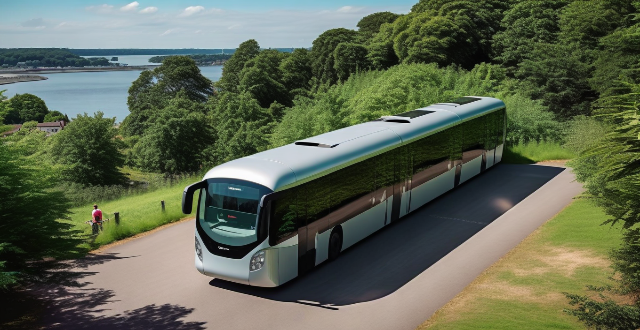
What are some examples of successful electric transportation systems ?
The text discusses the increasing popularity of electric transportation systems as a more sustainable and eco-friendly way to travel. It lists five types of successful electric transportation systems: electric buses, trains, taxis and cars, bicycles and scooters, and airplanes. Each system has its pros and cons, such as lower emissions and renewable energy sources for the pros, and limited range and infrastructure costs for the cons. The text concludes that there are many benefits to using electric transportation systems over traditional fossil fuel-powered vehicles, but each system's advantages and disadvantages must be considered before making a decision on which one to use.

How do greenhouse gas emissions vary across different industries ?
Greenhouse gas emissions vary significantly across different industries due to the nature of their operations, energy sources used, and the level of technology employed. The largest emitters include electricity generation, transportation, manufacturing, agriculture, construction, services, and waste management. Electricity generation is one of the largest emitters of greenhouse gases, especially when powered by fossil fuels like coal, oil, and natural gas. Renewable energy sources such as wind, solar, and hydroelectric power generation have much lower emissions as they do not involve burning fossil fuels. However, there are still emissions associated with their production and installation processes. In transportation, cars, trucks, and buses that run on petrol or diesel emit CO2 and other pollutants. Electric vehicles reduce these emissions but their environmental impact depends on how the electricity used to charge them is produced. Aviation has a significant carbon footprint due to the fuel efficiency of aircraft and the altitude at which they release emissions. Maritime transport also contributes to greenhouse gas emissions through the use of heavy fuel oil in ships' engines. Iron and steel production, cement manufacturing, and chemical processing are among the heaviest emitting industries because they require high temperatures which are typically achieved through burning fossil fuels. Sectors such as textiles, electronics, and food processing generally have lower emissions than heavy industry but still contribute to the overall carbon footprint through energy consumption for machinery operation and industrial processes. Livestock farming produces methane (CH4), a potent greenhouse gas, during digestion. Manure management also leads to emissions of both CH4 and nitrous oxide (N2O). Farming practices including tillage, fertilizer use, and irrigation can result in N2O emissions and CO2 emissions from soils. The production of building materials like concrete and glass is energy-intensive and generates CO2 emissions. Additionally, deforestation for timber contributes to carbon emissions. The design and construction methods of buildings can influence their long-term energy consumption; poorly insulated buildings will require more energy for heating and cooling, leading to higher emissions over time. Emissions come from office equipment, lighting, and heating/cooling systems in office buildings. The type of energy source used for these purposes greatly affects the total emissions. Hotels and restaurants contribute to emissions through their energy use for cooking, refrigeration, and guest accommodation needs. Decomposing organic waste in landfills produces CH4, which traps more heat than CO2 over a 20-year period. Processes such as wastewater treatment and incineration also generate greenhouse gases depending on the technology and management practices used. By implementing cleaner technologies, improving energy efficiency, and shifting towards renewable energy sources, it is possible to reduce the environmental impact of various sectors and work towards a sustainable future.
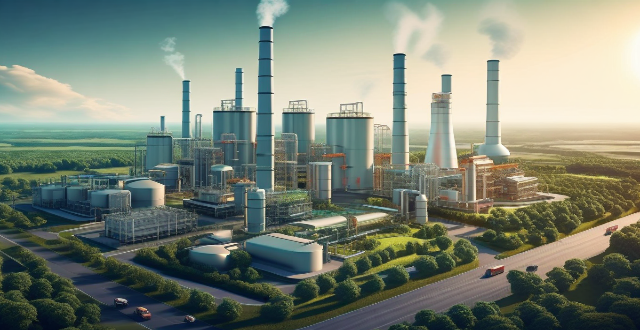
What role does natural gas play in the global energy market ?
Natural gas is a key player in the global energy market due to its environmental advantages, economic benefits, contributions to energy security, technological advancements, and versatile applications across sectors.

What are the benefits of owning an electric vehicle ?
Owning an electric vehicle (EV) offers numerous benefits, including reduced emissions and carbon footprint, lower operating and maintenance costs, improved driving performance with instant torque and quieter rides, government incentives, supportive infrastructure, protection from rising gas prices, and health benefits due to improved air quality. These advantages make EVs a crucial part of the transition to sustainable transportation practices.

In what industries are drive motors most commonly used, and why ?
Drive motors are crucial across industries for efficiency, reliability, and precision. In transportation, they power vehicles, aircraft, and railways. Manufacturing uses them in robotics, machinery, and printing. Construction and agriculture rely on them for heavy equipment and farm machinery. Consumer products like appliances and power tools also use drive motors, as do medical devices and prosthetics. Their significance lies in efficient energy conversion, reliable performance, and precise operation.

How can Smart Grid Technology reduce carbon emissions ?
Smart grid technology can reduce carbon emissions by improving energy efficiency, integrating renewable sources, enhancing system reliability, engaging consumers, and optimizing transmission and distribution.
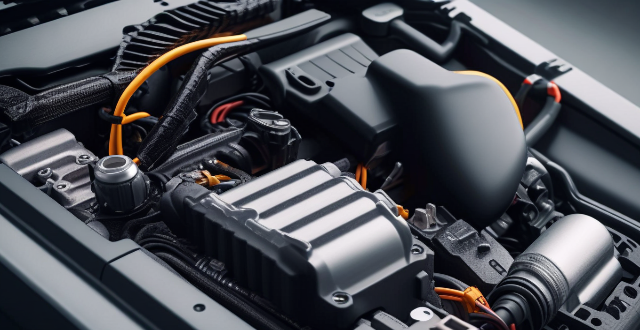
What are the key components of a CHEV's drive system ?
The key components of a CHEV's drive system include the engine, electric motor, transmission, battery pack, and energy management system. The engine generates the majority of the power needed to propel the vehicle, while the electric motor provides additional power during acceleration or hill climbing. The transmission transfers power from the engine and electric motor to the wheels, and may be a conventional automatic or manual transmission or a specialized hybrid transmission. The battery pack stores electrical energy generated by the electric motor during regenerative braking and provides power to the electric motor when needed. The energy management system controls the flow of energy between the engine, electric motor, and battery pack, determining when to use each source of power based on driving conditions, state of charge of the battery, and driver demand. These components work together to provide a seamless driving experience while maximizing fuel efficiency and reducing emissions.

What role can hydrogen fuel cells play in transitioning to a renewable energy future ?
Hydrogen fuel cells are a promising technology for renewable energy transition, offering advantages such as zero emissions, high energy density, and renewable sources. They have applications in transportation, stationary power generation, and industrial applications. However, challenges such as cost, infrastructure, and safety concerns need to be addressed for widespread adoption.
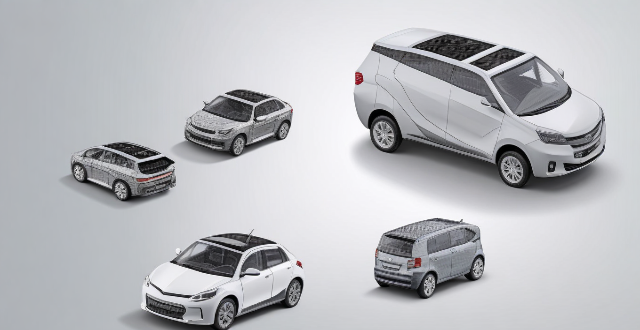
How does a parallel hybrid electric vehicle (PHEV) work ?
Parallel hybrid electric vehicles (PHEVs) are a type of hybrid vehicle that combines an internal combustion engine (ICE) with an electric motor. The two power sources can work independently or together, depending on the driving conditions. PHEVs have three operating modes: ICE only, electric motor only, and combined power. The energy management system controls the operation of the ICE and electric motor, deciding which power source to use based on driving conditions, battery state of charge, and other factors. PHEVs offer benefits such as improved fuel efficiency, reduced emissions, tax incentives, and reduced dependence on fossil fuels.

How do human activities contribute to climate change ?
The text discusses the significant impact of human activities on climate change, primarily through the emission of greenhouse gases (GHGs) from various sources like burning of fossil fuels in transportation and energy production, deforestation, agricultural practices, industrial processes, and building construction. It also highlights potential solutions to mitigate these effects, such as using renewable energy, improving energy efficiency, reforestation, adopting sustainable agriculture practices, and reducing waste.